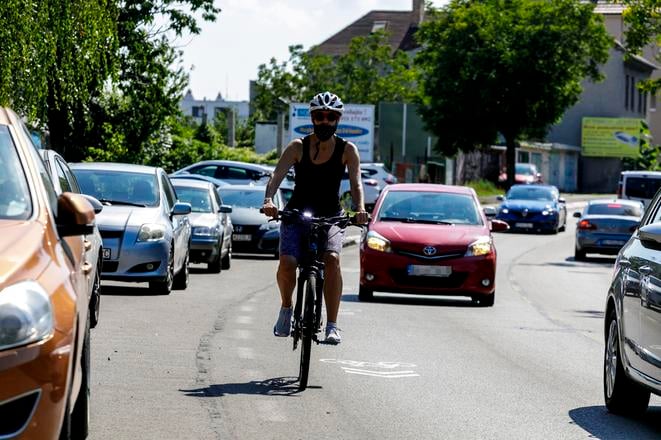Cyclists sporting professional jerseys and riding hyped-up bikes, a by-product of the successful career of Peter Sagan, have become a frequent sight on Slovak roads. But cycling remains a popular pastime rather than practical transport means for commuting.
This remains true despite the fact that the coronavirus situation has resulted in record sales of bikes in Slovakia and some have already chosen the bicycle as a way to minimise their contact with people on their commute to work.
This mental setup is mirrored in the cycling infrastructure in Slovakia: most regions boast a network of recreational cycling routes, bringing people to nature. The Transport Ministry admits that the network of cycling routes that people could use to commute to work, schools or shops is not as dense and this infrastructure requires more support.
“Infrastructure, infrastructure and infrastructure,” said Dan Kollár of the Cyklokoalícia (Cycling Coalition) civic association when asked what is required to persuade people to exchange a car for a bike. “The key is to physically create conditions when riding a bike comfortably and safely.”
Municipalities are aware of the need to support green transport, and perceive their inhabitants cycling more and demanding more cycling infrastructure. Yet they argue that infrastructure construction often takes a long time and requires more funds than the municipal coffers have to offer.
Recreational cycling wins
When it comes to cycling as a means of transport, Slovakia slightly lags behind its neighbours. The estimated rate of cycling transport at the overall number of transport is about 5 percent in Slovakia, while in the Czech Republic it is 6 percent and in Austria 10 percent, data from the Transport Ministry show.
Currently, there are about 550 kilometres of “cycling transport” routes in Slovakia used for commuting to work and 14,500 kilometres of cycling routes with a recreational function.

“In Slovakia, the crucial problem is not that people wouldn't have nowhere to go on bikes on a Saturday,” Kollár said.
The problem is that parents are afraid to let their children cycle to school alone for fear they could get hit by a car.
Kollár noted that people breathe polluted air and that obesity is on the rise. These are some reasons why he believes cycling as a means of transport needs to be promoted.
Campaigns supporting cycling:
This is happening through several nationwide campaigns. One of them, taking place under the auspices of the Transport Ministry, starts in September. It is called Do práce na bicykli (Bike to Work) and is meant to, among other things, raise awareness among municipal authorities to create better conditions for ecological forms of transport, motivate employers to provide their employees with better conditions to commute by bike, and motivate employees to hop on their bike every day.
Dependent on political will
Cyklokoalícia has been following conditions for cyclists and pedestrians in the country for ten years. Kollár noted that the development rate of cycling infrastructure varies from place to place. It does not depend on the size of the municipality as much as on the political will of the local authorities and the willingness to take lessons from other towns where cycling works.


 Pionierska Street, Bratislava (source: TASR)
Pionierska Street, Bratislava (source: TASR)